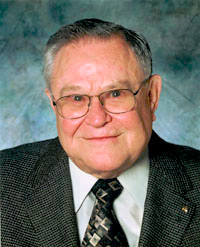Heading 2
Lorem ipsum dolor sit amet, consectetur adipisicing elit. Nostrum minus ea suscipit porro alias corporis libero at. Perferendis omnis, veniam nemo beatae vel? Tempora numquam a repellat eaque natus, magnam?
Heading 2
Lorem ipsum dolor sit amet, consectetur adipisicing elit. Autem ipsum mollitia neque, illum illo excepturi, eum incidunt fugit nostrum est, voluptate eaque minima corporis debitis at, dolores ipsam. Quaerat, dolores.
Heading 2
Lorem ipsum dolor sit amet, consectetur adipisicing elit. Autem ipsum mollitia neque, illum illo excepturi, eum incidunt fugit nostrum est, voluptate eaque minima corporis debitis at, dolores ipsam. Quaerat, dolores.
Heading 2
Lorem ipsum dolor sit amet, consectetur adipisicing elit. Autem ipsum mollitia neque, illum illo excepturi, eum incidunt fugit nostrum est, voluptate eaque minima corporis debitis at, dolores ipsam. Quaerat, dolores.
Heading 2
Lorem ipsum dolor sit amet, consectetur adipisicing elit. Autem ipsum mollitia neque, illum illo excepturi, eum incidunt fugit nostrum est, voluptate eaque minima corporis debitis at, dolores ipsam. Quaerat, dolores.
By Dick Gong, John Lloyd and Ron Fong
Local governments often tackle similar issues with different solutions. The result is usually a patchwork of laws in neighboring cities, increasing the difficulty and cost of compliance for businesses and confusing consumers. We applaud all 10 Sonoma County jurisdictions for addressing carryout bag regulation in unison.
Through the Sonoma County Waste Management Agency, all 10 county jurisdictions are simultaneously working to regulate carryout bags. This regional approach has included numerous opportunities to discuss and review the proposal, both with the agency and in each jurisdiction.
The Sonoma County Board of Supervisors on June 18 gave its formal support to an ordinance that would ban carryout plastic bags at checkout lines countywide. It would also add a 10-cent charge for each paper bag.
By employing a regional and measured approach, Sonoma County elected officials have respected the public and businesses while working to achieve their environmental goals. This level of regional cooperation should be recognized and rewarded.
More than 75 jurisdictions in California have already regulated carryout bags. The proposed Sonoma County regulation, similar to other California ordinances, would maximize environmental gain and minimize impacts to business.
Since passing a similar ordinance in 2010, Los Angeles County has seen single-use bag consumption reduced by more than 90 percent. They also found that consumers quickly adapted and businesses felt minimal impact.
We agree with many that this is an issue of statewide concern and the state Legislature should step up and regulate bags. This would create the most environmental benefit and eliminate the patchwork of local legislation. As an industry, we continue to push for a reasonable statewide law in order to remove the difficulty of implementing dozens of varying local bag laws.
Unfortunately, the state Legislature has failed us and left the task to cities and counties. The Legislature’s inaction makes the county’s regional effort even more valuable to consumers and businesses.
We urge each jurisdiction to remain committed to the regional process and regulate carryout bags in unison. We believe the proposed ordinance is respectful of consumers and businesses, as proven in dozens of other California cities and counties.
The process is often just as important as the policy being considered. In this case, Sonoma County elected officials got it right by pursuing a regional bag ordinance.
Dick Gong is co-owner of G&G Supermarkets. John Lloyd is president of Big John’s Market in Healdsburg. Ron Fong is president and chief executive officer of the California Grocers Association.
Reprinted from The Press Democrat (6/26/2013)

